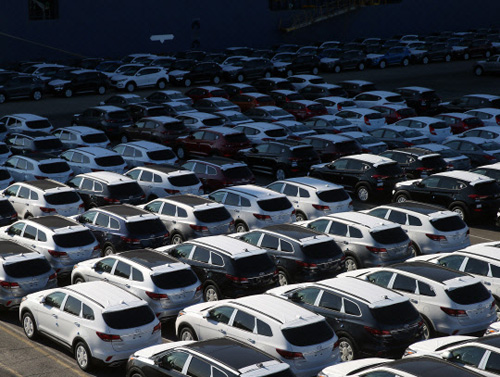Domestic car makers to have stopped factory foundation for 20 years due to strike & high wage
Ye Jin Soo | jinye@ | 2017-12-26 10:58:49

[Photo] YONHAPNEWS
Issue analysis: Car industry to have stopped investment after 1997 chaos
After the 1997 financial crisis, no single automobile factory was built in Korea for 20 years until the end of the year.
Labor flexibility and per capita productivity have fallen to the lowest level in the Organization for Economic Cooperation and Development (OECD). In the case of Hyundai Motor, which has been showing signs of a crisis due to sluggish sales, the proposal for a tentative agreement on wage and collective bargaining between labor and management was rejected on February 22. As a result, Hyundai Motor is likely to move to labor negotiations for the first time since its founding, and this is an analysis that shows that the domestic car industry is reluctant to invest in new factories.
According to the automobile industry on December 25, the domestic automobile industry has not built a single factory in Korea by the end of the year, which was the 20th year of the IMF crisis, after the Nubira Gunsan plant of Daewoo Motor, which has an annual capacity of 300,000 units, was installed in February 1997. The automation rate of the Daewoo Automobile Gunsan plant, which produces quasi-hybrid car Nubira, was 97% for the body welding line and 100% for the press plant, and some lines indicated that it is difficult to find people at all. Hyundai Motor`s new plant was established in 1996 as the Asan plant was the last. The domestic automobile industry, which has not been able to cope with high costs and high efficiency, such as frequent strikes by stiff unions and lower productivity than Toyota and Volkswagen, is no longer building factories in Korea, and it is pointed out that domestic jobs are being taken away overseas.
Experts point out that the overall profitability of Hyundai and Kia Motors has been declining sharply in the automotive industry, which has a large effect on front-to-back relationships such as the employment and parts industries.
Meanwhile, Song Young-kil, the chairman of the North Korean Economic Cooperation Committee visited Hyundai Motor`s Chongqing factory in China, and on the 16th, `I am concerned about the future of the Korean automobile industry` on Twitter, `re-shoring` Stop `problem is highlighted again. Song said, "The average age of Chongqing Hyundai workers is 26 years old (Ulsan 46 years), salary KRW 940,000 (Ulsan 8 million), productivity 160 (Ulsan 100) Chongqing factory productivity was 1.6 times.
Domestic factories accounted for 48.1% of Hyundai Motor`s total production in 2010, down from 50% in 2010, and fell to 37.6% as of November. Song, a professor of sociology at Seoul National University, said in a lecture ahead of Song that "If we do not recognize the current crisis properly, Hyundai Motor may have to worry about survival within 10 years." Professor Song pointed out in his book "The Way He Has Never Seen", saying, "The recession of the shipbuilding industry and the massive restructuring have not yet crossed the South Gate, but there was a sense of uncertainty that someday we might hit Hyundai. "He wrote.
Besides, in the past 20 years, Japan has succeeded in increasing the domestic production volume of domestic automobile companies that went abroad due to the special strategy of the State Strategy and corporate tax cuts, but in Korea,
Daegu Samsung Commercial Vehicle in Korea, which aimed to produce 200,000 units of trucks, was exiled in 2000, and many unemployed people were mass-produced. An official from the automobile industry said, "Renault Samsung Motors, which has suffered a financial crisis following the restructuring of Ssangyong Motor in 2009, has undergone a large-scale restructuring that cuts about 30% of all employees in 2012, Renault Samsung said, "Due to lack of labor flexibility in Korea, even if export volume increases, it is difficult to expand domestic plants."
Meanwhile, Japanese automakers are making their own production lines due to the weak yen. Honda recently decided to relocate its production base from China to Kumamoto in Japan in order to launch a new model for the 60th anniversary of the launch of the "Super Curve" miniature motorcycle in 2018. Toyota also made some of the production facilities of Camry and Lexus, which were produced in the US and Canada last year, to Japan, and Nissan has recently increased its production in Japan. Other companies are also in the process of reviewing the possibility of re-introducing Japan`s facilities and R & D into Japan by the recent recession, regulatory reform and corporate tax cuts.
By Ye Jin Soo jinye@
